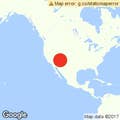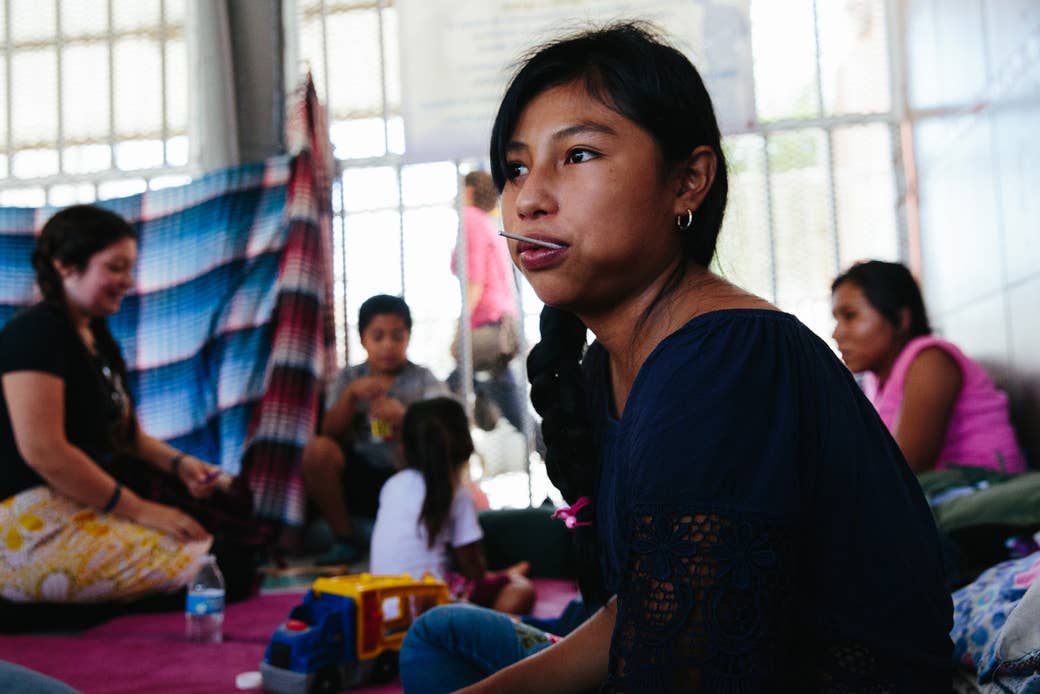
When Marializ Guerrero Bautista decided to leave her home state of Guerrero, Mexico, the 14-year-old did the same as many Mexicans who’ve fled north seeking asylum from drug cartels’ death threats. She got a ride.
“I asked my grandfather to drive me to Santa Ana,” Bautista explained matter-of-factly, referring to a town in the Mexican state of Sonora. Unable to protect his granddaughter, he agreed, driving her nearly the length of Mexico in hopes that she’d ultimately get to New Jersey, where her mother now lives.
From Santa Ana, she used money her grandfather had given her and took a bus to Nogales, on the Arizona border, where on Saturday afternoon she was waiting to cross into the United States and ask for asylum.
Bautista’s story isn’t uncommon. Although many immigrants pay coyotes to take them north, thousands make the trek on their own, though you wouldn’t know it from the way President Donald Trump talks.
According to Trump, a vast, highly sophisticated criminal cabal is ferrying thousands of children like Bautista through Mexico to the southern US border, then pairing them up with MS-13 gang members and rapists who pose as their parents and use their knowledge of American asylum laws and policies to invade the US.
“Children are being used by some of the worst criminals on earth as a means to enter our country,” Trump wrote on Twitter earlier this month in defense of his immigration policies.
Similarly, during a speech to the National Federation of Independent Business, Trump warned that “since last year, child smugglers, who are very, very sophisticated,” have learned the loopholes “in this horrible, rotten, system.” As a result, he added, “you see what happens with MS-13, where your sons and daughters are attacked violently … not with guns, but with knives because it’s much more painful.”
It’s a grim vision of the current state of play in the United States. It’s also, like much of Trump’s immigration rhetoric, disconnected from the complicated, dangerous reality of undocumented immigration.
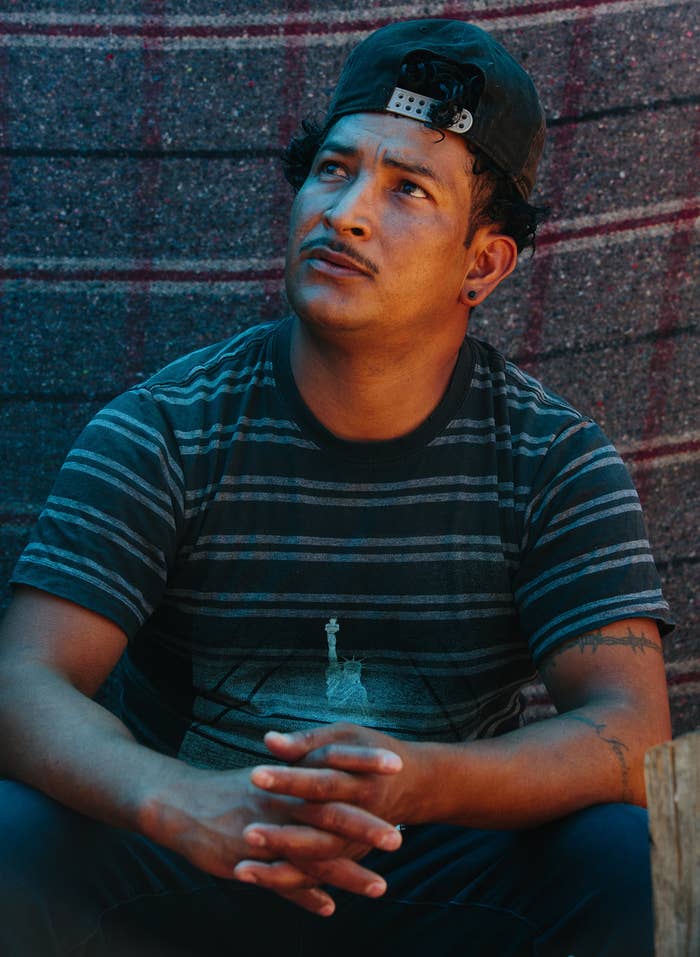
Mártir Naum Palma Corea sighed as soon as Trump’s name was uttered. After spending the better part of the last 15 years in Phoenix before being deported in January, he thought he’d heard every racist, outlandish, and random thing the president of the United States thinks about immigrants.
But he’s clearly surprised at Trump’s latest saw: that a criminal network of gangs is ferrying tens of thousands of Central American migrants through Mexico and into the United States.
“No, no,” he said, clearly bemused by the thought. Sitting in the shade of a tattered blue tarp in the Caborca, Mexico, migrant shelter run by the human rights group Pueblo sin Fronteras, Palma said he joined a group of other immigrants in southern Mexico two months ago. He’d been deported from the US back to his native Honduras, then left Honduras for Mexico after the local gangs who’d first driven him to flee 15 years ago threatened to kill him upon his return. None of the migrants in his group had much money, so they were relying on "la Bestia," a free — assuming you don’t get robbed — network of freight trains to make their way north.
“It’s a blazed path here. Everybody gets together, and they go on a mission to get here,” he said.
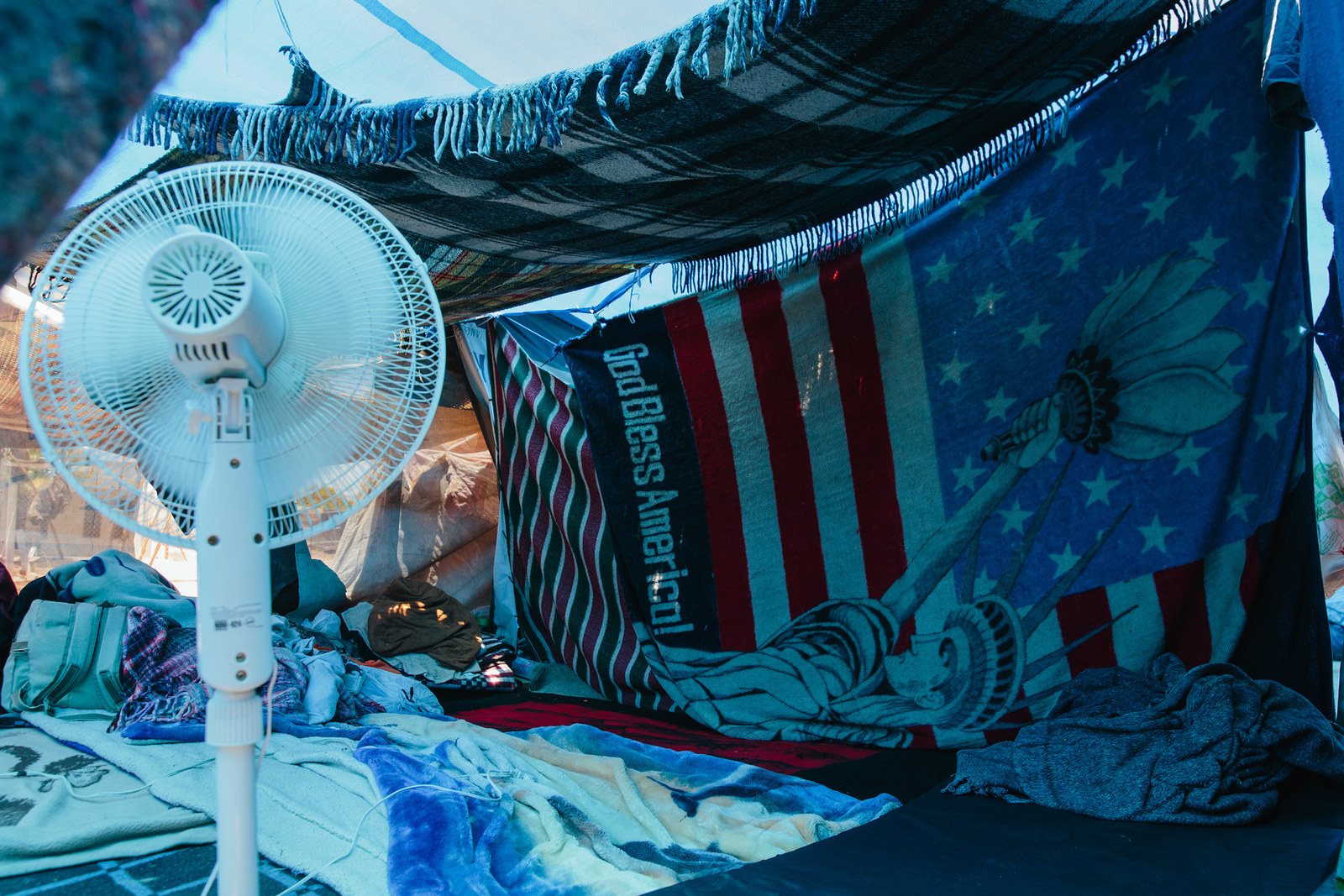
Although la Bestia’s popularity has waned in recent years because of problems with rape, assault, and extortion, it still ferries thousands of people from one end of Mexico to the other.
But there are plenty of other ways for people to get to the border.
If they have money, they can simply buy a bus ticket. The Mexican government has also given asylum-seekers from Africa, Asia, and other parts of the world special documents that allow them to travel legally through the country for a certain period of time.
Others like Bautista, who are either from Mexico or have family there, arrange for rides for all or part of the long trip to the US border.
And then there are those who end up walking, like the people in the migrant caravan that touched off Trump’s anger this spring. It can be a grueling, terrifying process for immigrants, who can spend months on the road, slowly inching north.

Of all the ways immigrants come north, walking is the most dangerous. There is significant discrimination against Central American and southern Mexican immigrants through much of Mexico: for instance, neighbors of the Casa del Migrante shelter in Caborca have threatened them with guns, according to Josael Romero, the shelter’s director. They also tried to force the city to close the shelter, circulating a petition. “They all signed it … but we have a constitutional right to be here,” he said.
Police and the military can also be a major danger to immigrants. Following the 2014 surge of immigrant children to the US, the Obama administration pressured the Mexican government to slow the flow as quickly as possible. Its solution was Plan Frontera Sur, which essentially choked off undocumented immigration at Mexico’s southern end.
Police, immigration agents, and the military were deployed throughout Mexico’s southern states as part of the crackdown, which led to widespread brutality against immigrants who found themselves stuck in poor, rural states like Tabasco and Chiapas for months or more.
And then there are the cartels and smaller local gangs. For years they’ve acted essentially as a black-market version of nation-states, charging taxes and fees for immigrants crossing through their territories, dictating what roads, buses, or trains they can take, and often forcing them to become cannon fodder for the gangs' seemingly endless wars against one another and the government.
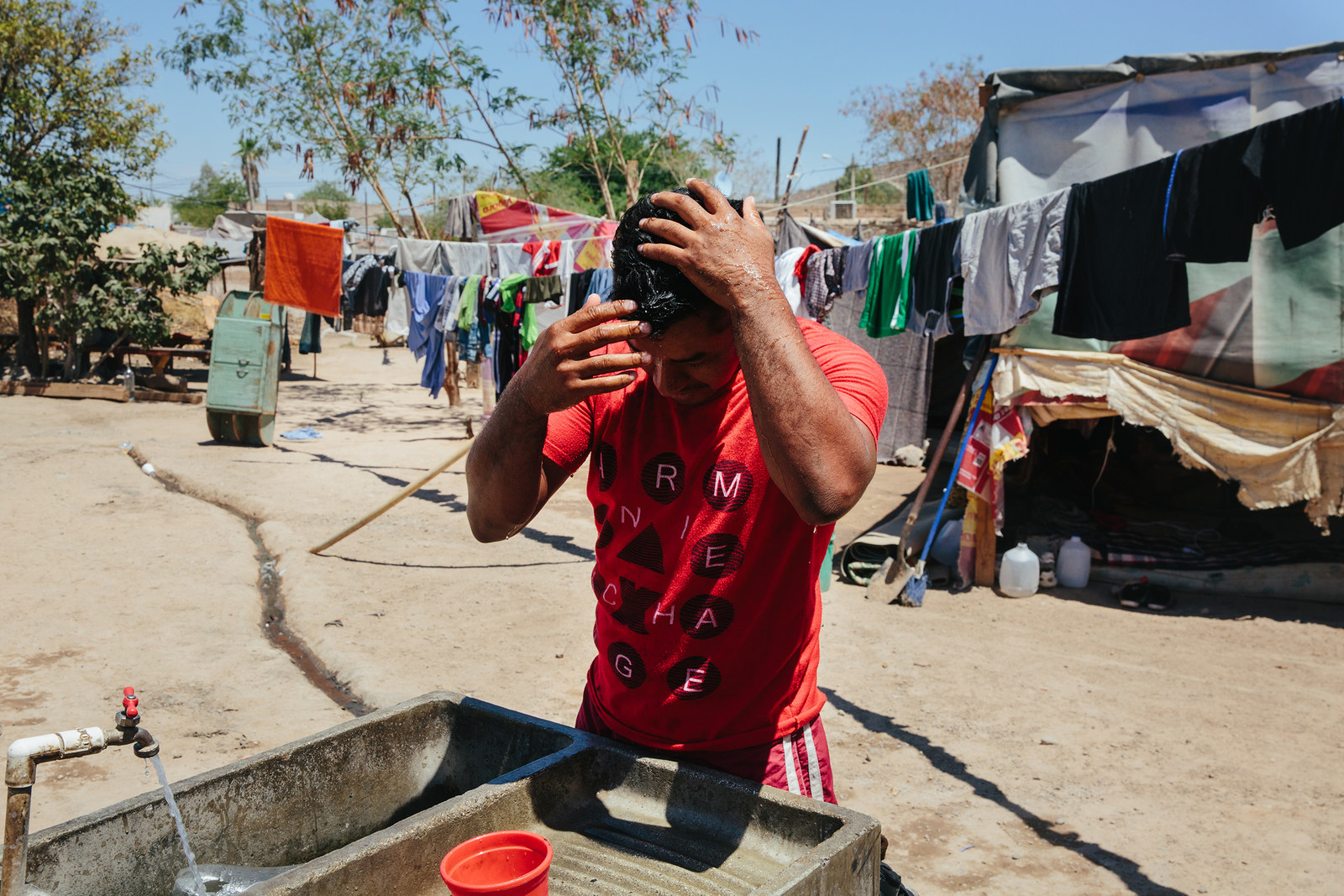
Of course, coyotes exist and are used extensively by immigrants coming north. But in most cases they are independent contractors who are hired for specific parts of a trip. For instance, immigrants will hire them to help cross the rivers at Mexico’s southern border or the mountainous territory of the nation’s isthmus, and they remain popular along the US border, where they have expertise with specific stretches of territory. According to Romero, coyotes charge between $3,000 and $4,000 per adult to cross into the United States, but children are considerably more expensive “for the extra care.”
It’s not until you get to the US border that drug cartels have much to do with immigration.
Over the last several decades, as successive US administrations have tightened control on the safest crossing points on the border, coyotes have become increasingly necessary. At the same time, the cartels were "diversifying their businesses” to work with the coyotes, said Guadalupe Correa-Cabrera, a professor at George Mason University who has studied both drug cartels and undocumented immigration. Correa-Cabrera, Romero, and others familiar with how coyotes work said there’s now an established system whereby cartels charge coyotes hefty fees to use the “crossing lanes” they’ve established for drug smugglers. In return, the cartels patrol the southern side of the border, looking for immigrants attempting to cross on their own. The cartels either force them to hire coyotes, or kill them.
Human smuggling is “not the business model of the cartels,” Correa-Cabrera said, but extortion most certainly is.
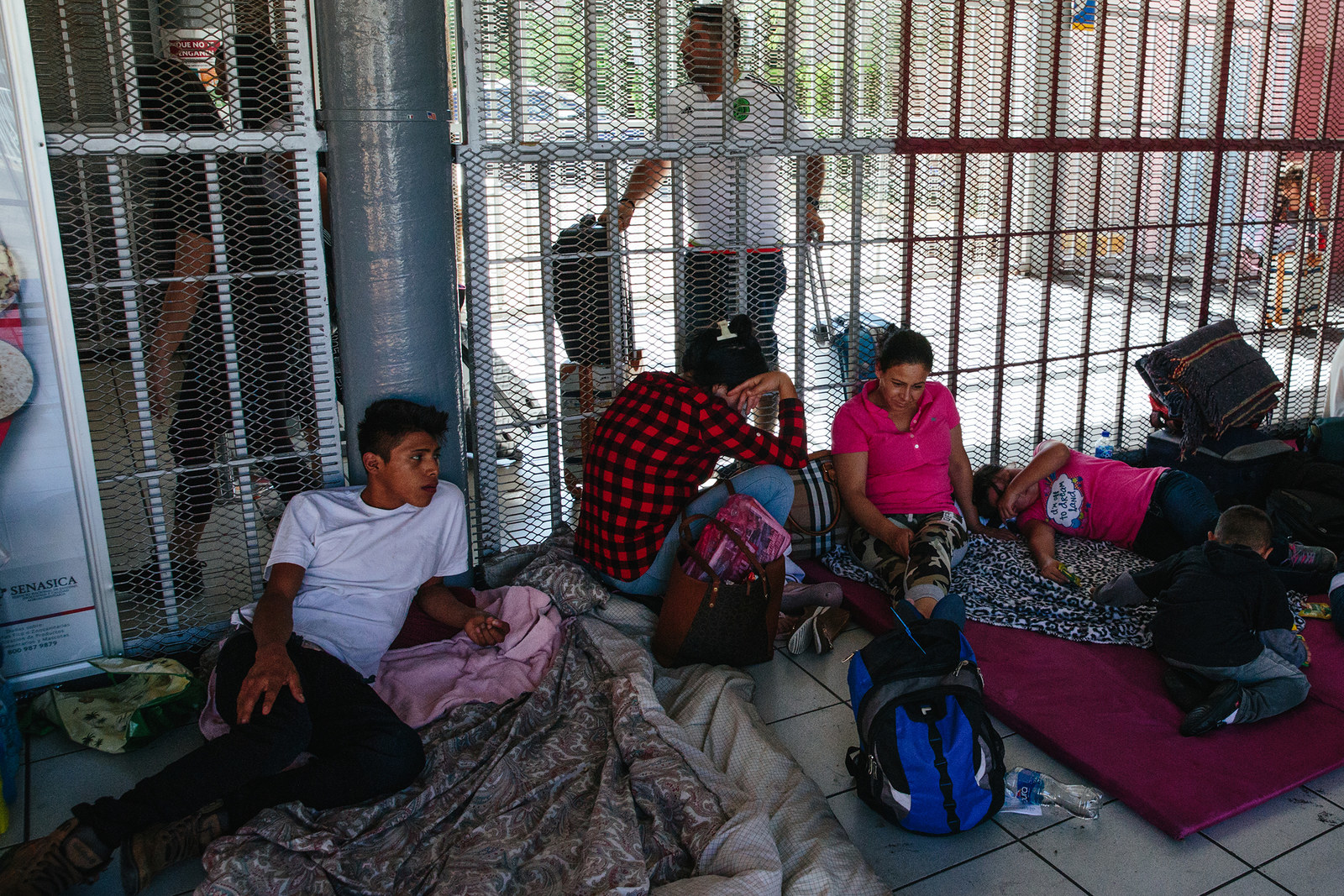
As for Trump’s claim that MS-13 is using children as props to fool US asylum officials, there’s little evidence that many, if any, adult immigrants are posing as parents with children or are gang members posing as family members of children.
“It’s ridiculous,” said Correa-Cabrera. “I can tell you that is totally false. I have interviewed dozens and dozens of migrants in my life, and I have never seen that.”
Correa-Cabrera and other activists also point out that many of the women and children currently coming to the US aren’t actually crossing illegally at all. The majority are heading to official ports of entry to apply for asylum. Correa-Cabrera also said the claim of children being props in some sort of MS-13 invasion plan makes little sense given that most unaccompanied minors fleeing Central America are coming to the US to get away from gangs.
“Many of these kids you see traveling by themselves, they were going to be recruited by some gang, and they’re trying to escape that,” she said.
They’re teenagers like Marco Tulio Daniel Ramirez, who was leaning against the wall of the Nogales port of entry walkway, his legs stretched out in front of him. He had the studied, overly cool nonchalance that most teenage boys ooze, whether they feel it or not.
Until a month ago, the 17-year-old Honduran was like most other kids. His family was poor, but he was happy. That is, until local gang members approached him. They wanted him to join up with them, he said, a common story among young people from Honduras, El Salvador, and Guatemala, where gangs like MS-13 and Mara 18 are, as one federal judge ruled last year, the de facto governments.
“They told me, If you don’t join us we will kill you,” Ramirez said with a quiet shrug. He didn’t need to be told twice. For people in Honduras, that’s not so much a threat as an ironclad promise.
So Ramirez pooled what money he could, and three weeks ago he headed north, walking, taking buses, and occasionally hiring coyotes along the way. It was his second day in Nogales, and, along with Marializ and a handful of other asylum-seekers, he’d spent his first night sleeping on the concrete floor of the border crossing walkway.
Like a lot of the teenagers who end up alone at the border, Ramirez doesn’t know what will happen next. While on the road north, he said, he heard that some people get asylum, “so I want to ask for it.”
His confidence seemed to fade, though, when asked what he’d say to people in the US who might think he’s one of the gang members Trump has warned about. He considered the question for a moment before saying, “I just want a decent job.” ●

